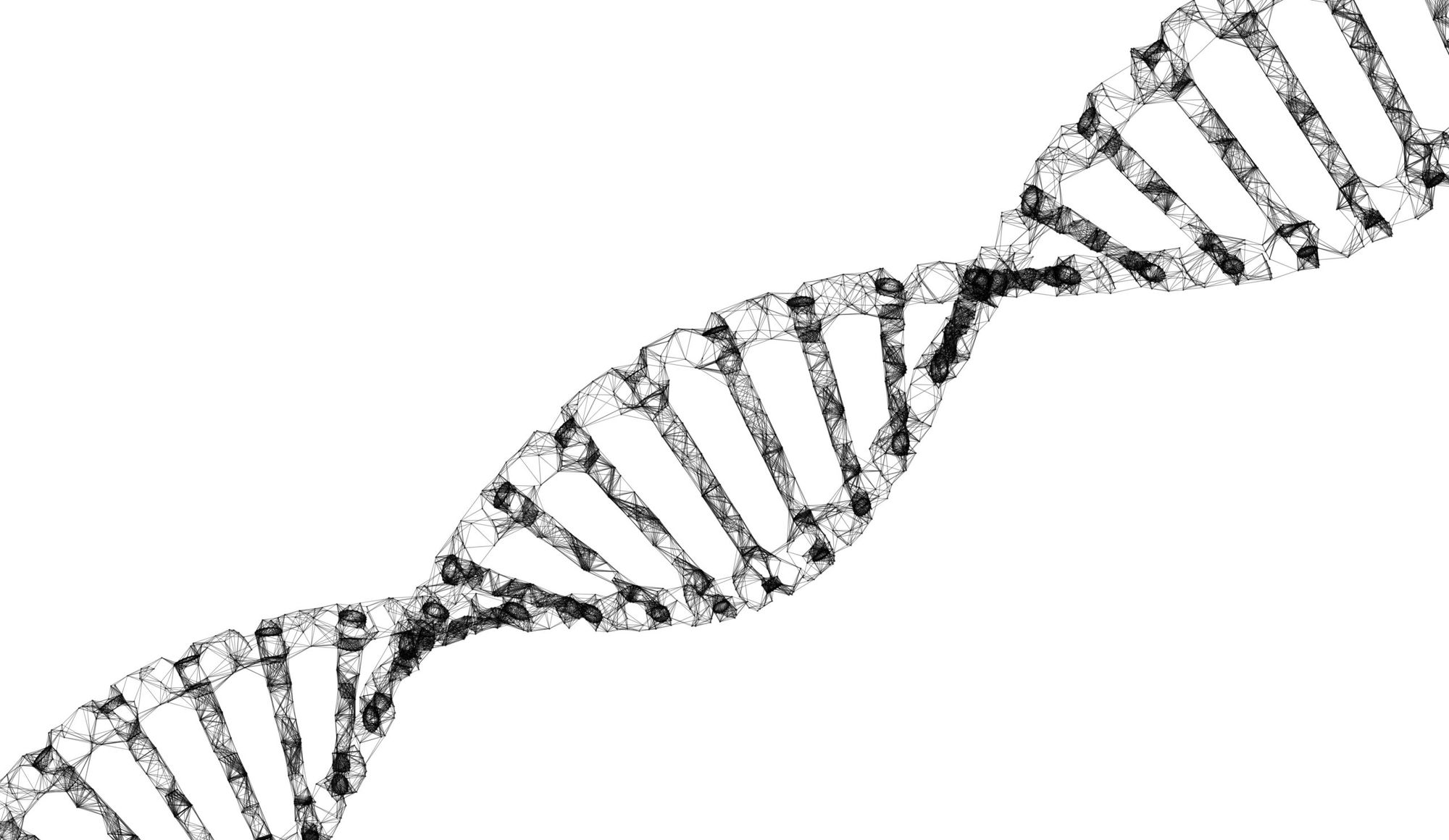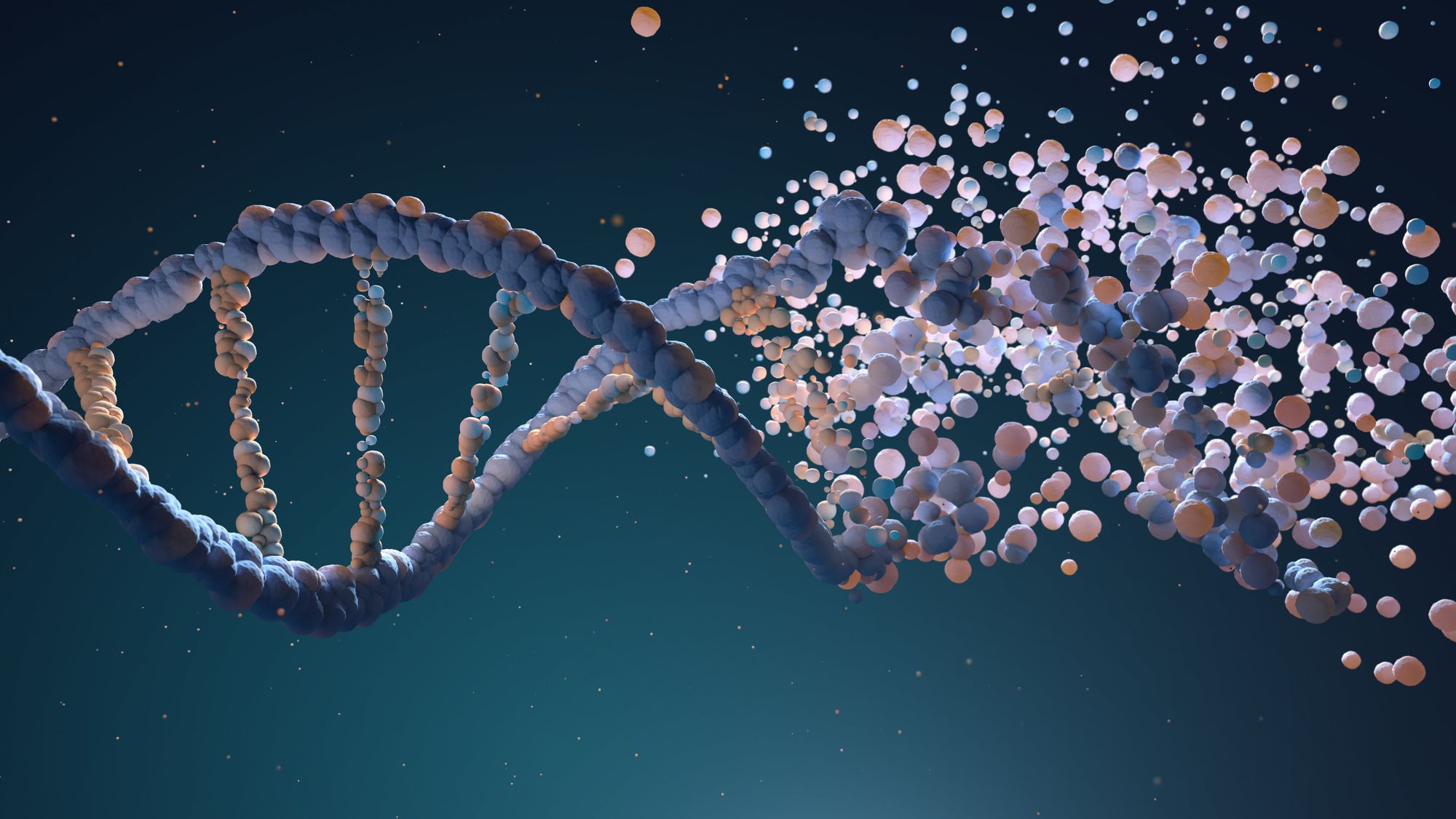
Cancers are often linked to gene mutations, also referred to as genetic variants, which could be changes or damages to one or more of your genes. Mutations in certain genes are often associated with an increased risk of certain types of cancer. A DNA test can help you find out if you have any cancer-causing genetic mutations. If your DNA test from CircleDNA reveals that you have cancer-causing genetic mutations, this doesn’t necessarily mean you’ll get cancer, but the information from your DNA test helps you to take preventative measures. Even though genetic mutations don’t always mean you’ll get cancer, certain mutations do increase your risk of getting cancer compared to someone who does not have a cancer-causing genetic mutation.
Not all gene mutations are bad. Only pathogenic or likely pathogenic mutations (pathogenic variants) are deemed to be genetic mutations that could cause cancer or increase the risk for other diseases. There are other genetic mutations that can make you a fast runner or a supertaster, which are not bad traits at all.
In addition to determining whether or not you may be at higher risk of developing certain cancers or diseases, genes also are responsible for determining your unique traits such as eye color, hair color and more.
All human beings have genes that are found in every cell in our body. A cell contains DNA strands that control how our cells function, how fast the cells grow and divide, and how long the cells live. Some of these genes can also tell a cell how to make a specific protein to perform a certain function in the body.
According to the Human Genome Project, each cell contains about 20,000 different genes which make you who you are. At the nucleus of each cell are thread-like structures called chromosomes which come in 23 pairs, half from the mother and half from the father. These chromosomes contain many genes, with each gene containing DNA molecules. The DNA is made up of four base chemicals that form pairs that tightly coil multiple times in a double-helix structure. These pairs make up different combinations or sequences, creating codes for varying genes, amounting to 3 billion base pairs in the human genome.
Genes are not visible to the naked eye, but they determine many things including your appearance and your unique traits. The way they are structured also has the power to control your health and impact your mental health or behavior. Any modifications to any of the structures are called genetic mutations. This could stop the genes from working properly.
Mutated genes are often associated with cancer and sometimes they are called ‘cancer genes’. These abnormal cancer cells grow faster than usual, invading the body to destroy healthy cells so organ systems do not work correctly.

How Do Gene Mutations Lead to Cancer?
It’s important to understand some basic gene concepts to fully comprehend the mechanism of how genetic mutations could result in cancer. Genes control how cells work by making proteins that carry out functions or act as messengers for cells. Each gene contains DNA codes that are akin to instructions to make a specific protein, allowing the said protein to perform the correct cell function.
However, when there’s a mutation in the genetic code, normal protein information is impeded, or abnormal protein is created. A normal DNA sequence could have a mutation in the form of deletion, insertion, duplication, or inversion of the base chemicals. This could cause cells to stop their function or multiply uncontrollably to become cancerous. The two basic types of gene mutations are germline and somatic.
Germline Mutations
Every human being has genes, and they come in base pairs just like chromosomes. One copy of your genes comes from your father and the other from your mother. The father’s sperm and the mother’s egg are called germ cells. When there’s a gene mutation present in the germ cell, it’s called a germline mutation.
If a human being inherits the germline mutation from the sperm or egg, all the body’s cells will have it from birth. That’s because the initial sperm or egg cell is copied or encoded into all the DNA of every cell at the conception of the embryo. This inherited mutation could transcend generations through your future offspring since the mutation also affects the reproductive cells.
These are the strong characteristics which warrants the presence of inherited cancer genes:
- A certain type of cancer runs in the mother or father’s side of the family.
- Cancer onset happened at an earlier age than the expected population (younger than 50 years of age).
- Presence of premalignant conditions in younger family members like colorectal polyps.
- One relative has a confirmed faulty genetic mutation found via a DNA test.
Somatic Mutations
Over time, there could be changes in your genes when the cells divide and replicate. These mutations which you’re not born with are called acquired mutations or somatic mutations, which occur after conception or post birth. Unlike germline mutations, anything acquired is not present in all the body’s cells. This mutation is only present in some specific cells, and it is therefore not inherited or passed down to your future children. This happens because you could have been exposed to a mutagen (a chemical or physical agent that has the ability to change our genetic code in a harmful way), or something in the environment that damages the genes. Examples of mutagens are the following:
- Carcinogens in food
- Cigarette smoke
- Alcohol consumption
- Radiation or chemical exposure to pesticide or lead
- Viruses or other illnesses
- Drugs
- Excessive UV exposure from the sun
- Aging
Over time, genes could develop mutations due to the natural aging process. So what does this mean for your body?
A Gene Mutation Doesn’t Always Cause Cancer
Mutations happen more often than you think. One research study stated that mutations drive evolution while another study attested that mutation rates constantly change per year, indicating that genetic mutations continually happen in part because of environmental stimuli. A mutation could be beneficial, neutral, or harmful, depending on where the change occurs.
Impact of a Gene Mutation Depends on the Individual Case
The impact of the mutation depends on how the individual’s body responds to it. In normal cases, the body can correct the mutation. A single mutation is not likely to result in cancer, but multiple mutations over a period of time could lead to cancer. That’s why cancer rates for older people are higher because there are more opportunities for genetic mutations to build up and multiply over time.
Some of these changes in your DNA sequence won’t lead to any health issues, making them silent mutations with no manifestations. However, some genetic mutations could cause genetic conditions that adversely impact your health, such as cancer.
Inherited Predisposition
According to the University of Rochester Medical Center, germline mutations are involved in a smaller portion of cancer cases. The National Cancer Institute confirms that only 5-10% of cancer cases are the germline variant, which is also referred to as inherited cancer (inherited genetic mutation). If you’re born with an inherited genetic mutation or faulty gene, it doesn’t automatically mean that you will get cancer in your lifetime.
However, you have a higher risk of developing a particular type of cancer, depending on the genes affected. With inherited genetic mutations, you may also not definitively get cancer, but it could mean that you’re a carrier of the disease, and you could potentially pass it on to your kids.
Furthermore, those with a family history of cancer also usually develop cancer at a younger age. Specialists refer to this as having a strong genetic predisposition to cancer. Genetic testing from CircleDNA could help reveal your risk for cancer and other health conditions. For example, those who have a predisposition for colorectal cancer could plan to have more colonoscopies at an earlier age and more frequently to nip cancer-causing polyps in the bud before they morph into cancerous cells
Out of Control Growth
Most human cancers are somatic mutations. Cancer tumors form when cells grow out of control. In the human genome, various gene types control cell growth in a precise manner based on what is written in your DNA. A study noted that most DNA damage from the environment is repaired without errors. But with cancerous tumor cells, this balance is skewed and leads to an accumulation of multiple mutations.
Hence, the stability of the genome is lost, resulting in a mutator phenotype (a phenotype is a set of observable traits that affect the development process of an organism). When genes have mutations in the DNA code, they stop working correctly. In cancer cases, several mutations occur simultaneously in different genes. If this occurs rapidly over a certain group of cells, it could cause malignancy.
The Different Types of Cancer-Causing Gene Mutations
For a cell to become cancerous, there must be the presence of more than one genetic mutation. Certain types of cancers can be linked to specific genetic mutations, including breast cancer and colon cancer. However, there are also cancers wherein they are unsure if gene mutations are the root cause. Genes that result in cancer growth and development fall into the broad categories below:
Tumor Suppressor Genes
As the name suggests, these genes normally suppress or limit cell growth. They are protective genes that monitor cell division and new cell growth. They also repair mismatched DNA that gets replicated incorrectly or controls when a cell dies. However, when these genes mutate, they cannot do their job, so cells grow uncontrollably and develop into tumors.
Examples of suppressor genes are p53 or TP53 and BRCA1 and BRCA2 genes. Germline mutations in the BRCA1 and 2 are strongly linked to inherited breast or ovarian cancer in women, prostate cancer in men, and melanoma in both genders. Mutated faulty genes increase your risk of developing these cancers. Lynch syndrome, an inherited cancer syndrome, is an example of this. It increases your predisposition to certain types of cancers.
Most patients with cancer have a mutated p53 or TP53 gene. A missing or damaged p53 is the culprit for more than 50% of cancers. And notably, most of these p53 mutations are acquired. Germline p53 mutations are quite rare, but if you are a carrier of a genetic mutation, you are at a higher risk of developing different cancers and you also have the risk of passing it on to your offspring.
Oncogenes
Your body has a proto-oncogene, a normal gene that controls cellular growth. It is usually switched off and only turned on to prevent any abnormal cell multiplication. When they mutate, they become oncogenes that are always switched on. As a result, oncogenes morph healthy cells into cancerous ones by causing rapid and out-of-control cell growth. This kind of mutation is not usually germline but rather somatic in nature.
The most common oncogenes are the following:
- HER2: It is a specialized protein found in some cancer cells, controlling the growth and spread of the disease. It is common in breast and ovarian cancer.
- RAS: These are a family of genes that are involved in cell communication pathways. Since they serve as channels for cell growth and death, mutations in these genes could result in atypical cell growth.

DNA Repair Genes
This lives up to its name because these genes are supposed to fix mistakes made when DNA is copied. However, if there are mutations in DNA repair genes, they can no longer fix the mistakes in other genes like tumor suppressors or proto-oncogenes. Consequently, this could result in cancer because mistakes are not corrected and become permanent mutations. Mutation in DNA repair genes could be germline or somatic.
What Should You Do if You’re a Carrier of a Genetic Mutation, and Have a Higher Cancer Risk?
If you observe that you have a strong family history of cancer or feel very concerned about passing potential diseases to your future children because you’re starting a family, it would help to talk to a genetic counselor or your doctor. It is important to have as much information as you possibly can to prevent the onset of malignancy and to avoid passing these genetic mutations to your future children if you’re a confirmed carrier of germline mutations detected via a DNA test.
Your doctor can refer you to a genetic testing facility for counseling if you have a high risk and strong predisposition to cancer, based on your family health history. Alternatively, you can also take a CircleDNA test, as results include cancer and other disease risk reports, as well as information about whether you’re a carrier of specific cancer-causing mutations. Due to recent advancement in science one can opt for embryo screening post IVF process to detect the genetic mutation if you’re worried about passing this mutation to your children.
Most of all, knowing that acquired mutations happen, you must take precautionary steps to prevent exposure to mutagens. Although there are environmental stimuli beyond your control, what you eat and drink, chemical exposure, and lifestyle habits such as sun protection and wearing SPF, could limit the negative impacts of somatic mutations on your health.
Here’s Why You Shouldn’t Be Afraid to Find Out if You Have a Cancer-Causing Gene Mutation
Some people are afraid to get a DNA test, because they’re afraid to find out that they have a cancer-causing mutation. However, remember that having such a mutation does not automatically mean you’re definitely going to get cancer rather it’s a predisposition risk. It’s also important to remember that knowledge is power. This means that once you find out about your increased cancer risk due to a genetic mutation, you can take preventative measures that you may not have taken such as frequent screenings, blood tests and leading a healthy lifestyle which wouldn’t be possible without this knowledge. Cancer can be prevented, even if you have a genetic mutation.
The same goes for inherited diseases such as Alzheimer’s Disease. Check out this true story from Josephine Chong, who found out from her DNA test that she has a moderately high risk of developing Alzheimer’s Disease, as she has 1 copy of the APOE4 genetic mutation, which is the mutation associated with Alzheimer’s Disease. Josephine is happy she received this information. Now, she can plan accordingly. She can journal more often, knowing that there’s a chance of memory problems. She can take preventative measures to protect her brain health, such as modifying her diet to include more foods that are good for brain health. In general, she’s glad she found out about the genetic mutation, and she knows the mutation doesn’t mean she’ll necessarily get Alzheimer’s Disease.
Therefore, if you find out you have a cancer-causing genetic mutation (a pathogenic mutation), you could implement some of the above mentioned preventative measures like Josephine did.
If you learn that you or a blood relative of yours has a pathogenic genetic mutation, consult with a healthcare specialist as well as your family doctor to go over your risk assessment and preventive measure guidelines.
References
- New human gene tally reignites debate (Nature Briefing) https://www.nature.com/articles/d41586-018-05462-w
- Ways You Can Protect Your Genes From Mutations With a Healthy Lifestyle (Frontiers For Young Minds) https://kids.frontiersin.org/articles/10.3389/frym.2019.00046
- Genetics, Somatic Mutation (Brielle Miles and Prasanna Tadi) https://pubmed.ncbi.nlm.nih.gov/32491819/
- What is mutation? A chapter in the series: How microbes “jeopardize” the modern synthesis (Devon Fitzgerald and Susan Rosenberg) https://pubmed.ncbi.nlm.nih.gov/30933985/
- The Genetics of Cancer (National Cancer Institute) https://www.cancer.gov/about-cancer/causes-prevention/genetics
- Significance of multiple mutations in cancer (KR Loeb and LA Loeb) https://pubmed.ncbi.nlm.nih.gov/10688858/
- Lynch Syndrome (Cancer.Net) https://www.cancer.net/cancer-types/lynch-syndrome
- The Genetics of Cancer (Cancer.Net) https://www.cancer.net/navigating-cancer-care/cancer-basics/genetics/genetics-cancer







This Post Has One Comment
Comments are closed.